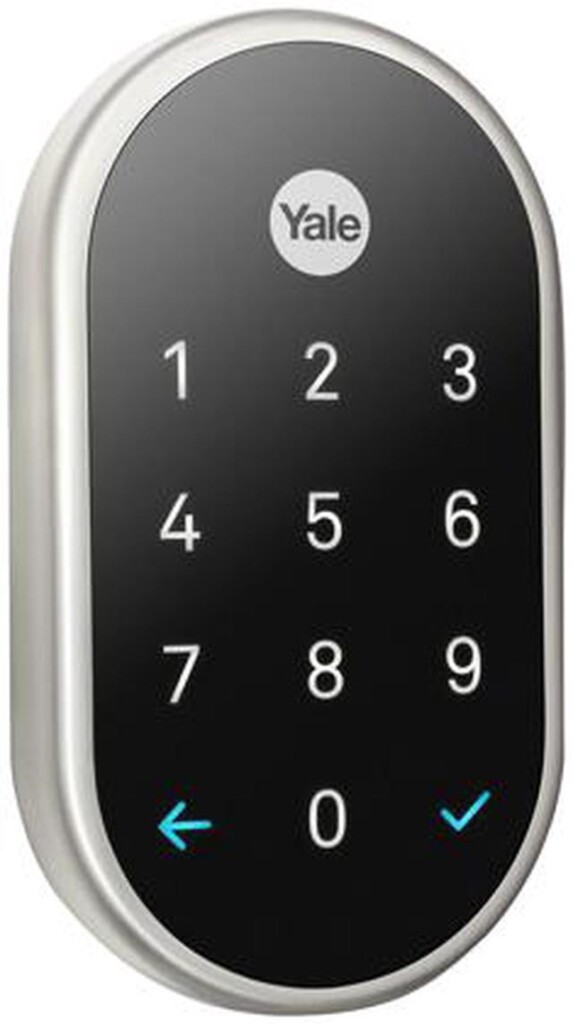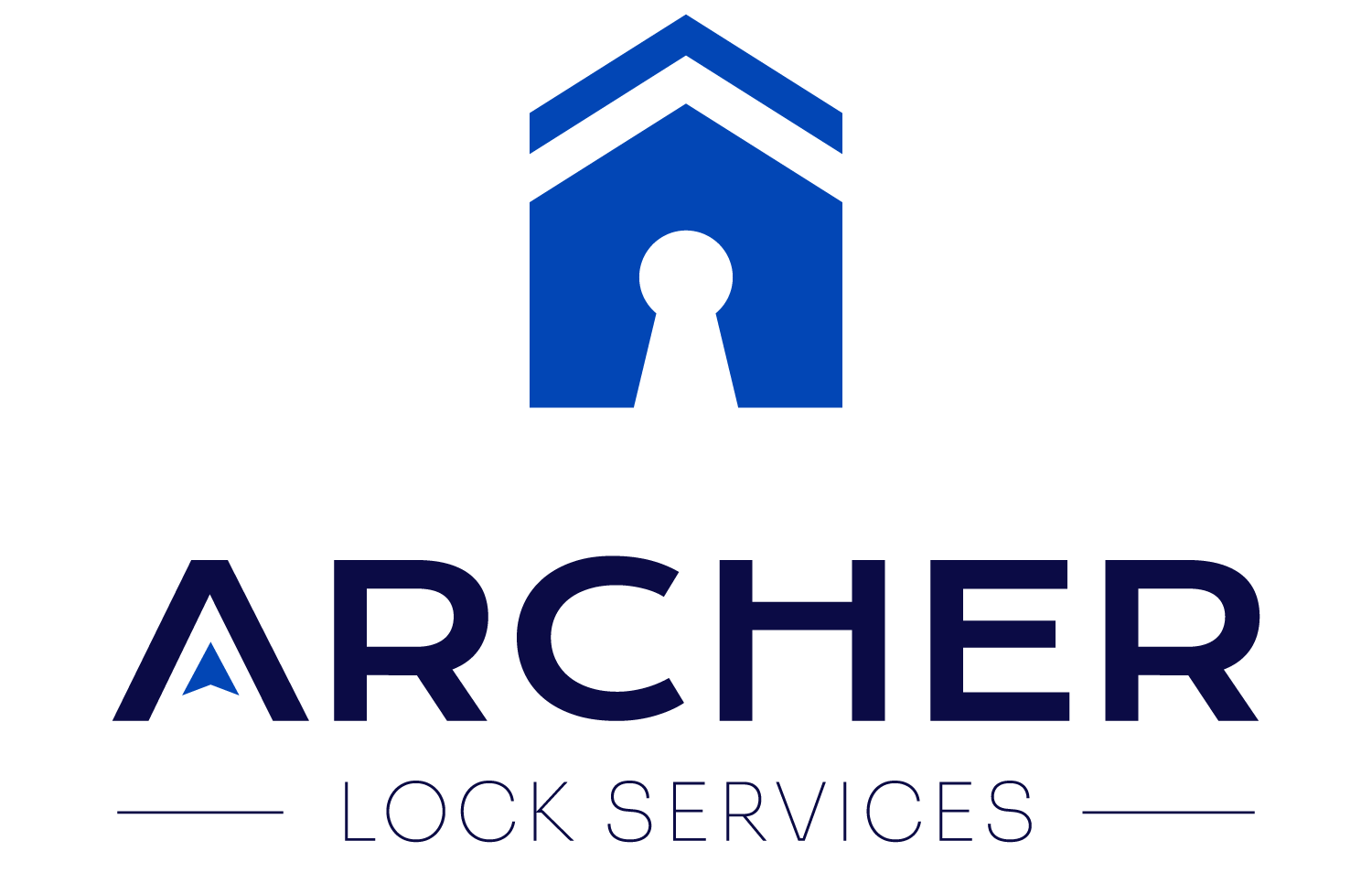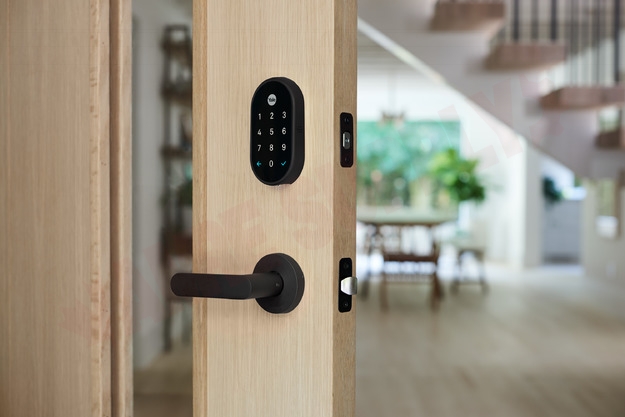Long-Term Review of Yale Nest Electronic Deadbolt
If you have read any of my articles regarding electronic locks, you will know that one of my favorite electronic deadbolts is the Yale Nest Electronic Deadbolt. In fact, I have two of them installed at home. For clients seeking an electronic lock with all the bells and whistles, here’s a long term review of the Yale Nest Electronic Deadbolt after 2 years of daily use.
As always, if you have any questions or comments, please call or text me at 604-363-2760 or email me at alex@locksmithvancouver.com. If you prefer the personal touch, you can also drop by our key store at the SFU/Harbour Centre located at 555 West Hastings St in Downtown Vancouver. The best way to find us is via the Cordova St entrance across the street from the Waterfront Skytrain Station. Our key store is located on the bottom floor next to the BC Liquor Store.
Quick Overview of the Yale Nest Electronic Deadbolt
The Yale Nest (as I call it) or the Nest x Yale Lock (official name but a bit wordy) is a keyless electronic deadbolt with the following features:
- Touch-sensitive keypad
- Fairly secure and tamperproof
- Remote access via the WiFi bridge and Bluetooth
- Works with Hey Google and Google Hub products
- Auto Lock and Away/Home Feature
- Privacy Mode
Rather than making a list of pros and cons, here’s a quick explanation of each feature and what I like and don’t like about it that feature.
Touch Sensitive Keypad
Yale makes a pretty good touch sensitive keypad. I’ve tried others from Schlage, Weiser, and even Emtek, and Yale probably has the best of the bunch.
With some of the other lesser keypads, it takes a while for the keypad to wake up from its dormant “OFF” state and be ready to accept your inputs. For some, you have to touch it in a specific manner or place, otherwise, it won’t wake up at all. Super annoying when you have to do this every day.
Meanwhile, the Yale touchpad lights up almost immediately with brightly lit numbers that are easy to see regardless of the ambient light conditions. Even with my myopia, I have never wondered what the numbers are, where I have to touch, if the device has acknowledged my input, or anything like that. It simply works and it’s a pleasure to use day-in and day-out.
Having used some of the other keypads on the market, I think Yale makes a great touch sensitive keypad. The only bad thing I can say about it is that sometimes I get “stabby” with my inputs when my hands are full or it’s cold outside. Rapidly poking at the numbers with the edge of your finger may not be acknowledged by the keypad. In addition, people with long or manicured fingernails may have a little trouble as well.

I have also noticed that the keypad sometimes doesn’t acknowledge my finger commands when my finger is wet. I have experienced this once in a while after walking the dog in the rain, and I have to shake the water off my fingers and try again.
On that note, please remember that this is a residential electronic device with no IP rating. It should not be installed on doors completely exposed to the elements. I live in a walk-up and both my front and back doors are exposed to the outside environment but covered by a walkway and the patio above.
Never had any rain/snow/moisture issues, but I would not install this in a place when it will be hit directly by rain or snow. Conversely, my back door lock faces West. So during the summer, it faces the scorching heat all day. Regardless, it has never failed to function and has never overheated or melted. The only caveat is that if the sun is at a particular angle over the horizon near sunset, it can glare out the keypad numbers and make it hard to see.
Fairly Secure and Tamperproof
Compared to some of the less expensive and lesser quality electronic deadbolts I’ve seen, I think the Nest x Yale electronic deadbolt is fairly secure and tamper proof due to the following:
- Keyless with no manual override cylinder
- Extra stabilization rods connecting the exterior with interior
- Emergency 12v battery terminals on bottom of exterior face
Unlike the Weser Powerbolt or the Schlage types, there are no manual override cylinders that can be picked or drilled open. Not only does this reduce the lock’s footprint on the exterior side, it removes a potential weak point. Most electronic locks use cheap cylinders that can be easily picked or drilled, so you are better off without one.
If the 4 AA batteries die on you, the Yale Nest electronic deadbolt has two terminals at the bottom of the keypad. If you hold a square 9V battery to the two terminals, it will power up the lock. Once unlocked, you should immediately replace the dead batteries.
Yale locks in general have two metal rods on the exterior piece that fit into two corresponding holes on an interior plate. This provides better stabilization during the install process and for everyday use. Once installed correctly, you don’t need to work about the lock shifting on your door or being twisted off easily.
All of these extra features add additional weight and heft to the exterior face which I personally feel contributes to a higher security level. There’s simply more material there to prevent tampering.
In comparison, the Powerbolt 3’s exterior piece is so light you will wonder if there is anything there at all. However, this is one of the reasons why the Yale Nest lock costs 4x more.
On the other hand, the heavy exterior part warrants extra caution during the installation process. Otherwise, the part can fall off the door and smash into the ground. I’ve had this happen to me a few times, but the keypad is surprisingly resilient to even falls from waist height. Although I dropped it accidentally onto a concrete floor during install, my back door lock works perfectly fine. However, I would not tempt fate by deliberately doing so.
Remote Access via WiFi and Bluetooth
My wife probably likes this feature the most. You can check the status of the lock and lock/unlock it remotely using the WiFi bridge or the Bluetooth connection.
I have not used the Bluetooth connection much to lock or unlock my doors. First, it’s faster to lock the door by just pressing the “Yale” logo on the keypad. It would take longer to unlock it with the Nest app on my phone.
If you are close enough to use Bluetooth, it is faster to just punch in my code to unlock the door. While Bluetooth has a significant range, if I needed to do something with my lock remotely, I used the WiFi bridge provided by the Nest Connect device. Of course, if you don’t have data on your cell phone or don’t want to use the data bandwidth, perhaps Bluetooth would be more useful to you.
I’m perhaps more old school and preferred using the keypad the most. My wife uses the Nest app to operate or to check the lock via the WiFi connection. When you are away from home, it is comforting to quickly scan your phone and verify that you did lock the door on your way out. If you did not, you can lock it with a simple touch on your cell phone.
The app will also notify you if the lock batteries are low, if the Nest Connect is using battery power (our dog will occasionally knock it off the wall power outlet), the lock failed to engage properly, etc.
You can also use the app to create temporary passwords etc. However, our lifestyle never necessitated the use of that feature.
There’s nothing bad to say about this feature except that it can be annoying to set up during the installation phase. When the app asks you to place your phone close to the white Nest Connection device, make sure to keep it about an arm’s length away from your phone. If it’s too close, it won’t work for some reason.
Otherwise, the WiFi connection is truly a global connection. I had my wife test the lock while she was on a trip in South Korea last year. It was amazing to see the device lock and unlock with the operator being halfway around the world. So if you have any remote properties you manage, this would be a great lock for you!
Works with Hey Google and Google Hub
Several years ago, my sister gave us a Google Hub (the small one) as a gift and we use it as a clock and to play music once in a while. So I had a chance to connect my Nest x Yale deadbolts to the Hub and operate them via the ‘Hey Google’ voice commands.
While it was a pretty cool feature, I never used it once after setting it up. Never really had to as I live in a typical Vancouver one level apartment. However, if you live in a multi-level home or simply a larger home where your doors are a bit further away, this may be a more useful feature.
I can imagine if you live in a townhouse where your entry door is 2 floors down and you have carpal tunnel syndrome, this will be a great feature for you. Otherwise, I think most of us would just whip out our phone and use the app.
Auto Lock and Away/Home Feature
As I get older (or dumber) I find myself forgetting whether or not I locked the doors. Fortunately most vehicles automatically lock the doors after a prescribed period of time. The Yale Nest electronic deadbolt has the same ability that must be activated from the options menu.
I turned this on after I found the back door ajar after coming home from work all day. My dog was fine and nothing was stolen so I figured that I didn’t lock the door and did not even close it all the way. Meanwhile, wanting to go outside. my dog pushed the door open. Not a big deal when I used to live on the 7th floor of an apartment building, but a huge deal when living on the ground level.
After I turned this feature on, all I had to do was make sure the door was closed all the way and it would lock itself. If I had not closed the door properly, the lock would not be able to extend the deadbolt all the way and I would get a notification on my phone via the Nest app – another reason to set up the WiFi bridge. So a great feature to have.
The Away/Home function was something I never got comfortable using. Basically, the lock will “know” when you are home or not via your phone and lock and unlock itself. So long as you have your phone with you at all times, you never have to manually lock or unlock the door. It will just do it for you.
I never used this feature because:
- I don’t always have my phone with me at all times.
- If I’m in the area but not far away enough, the lock will not engage.
- If multiple phones are registered as family members, the chances that something will go wrong will increase exponentially.
I’m a bit uncomfortable about the whole idea of the Internet of Things tracking where I am (or at least where my phone is). Plus, there is a certain comfort level of knowing that something is truly secured vs. trusting a device just to do it right every time for me.
Privacy Feature
If you did not know, there is a fairly large button on the back of the Next x Yale electronic deadbolt right above the thumb turn. Pressing the button once will cause the button to light up in a blue colour and the lock will tell you to press and hold to turn on the privacy mode. If you do so, the privacy mode will lock out the outside keypad. I’m told that it will also lock out remote access but I personally never tested that.
There are scenarios where you would want to use such a feature. Perhaps you want to make sure absolutely no one can get in while you sleep. Perhaps you want to make sure an ex-partner cannot get back in without your permission. Perhaps you want to prank your wife in the middle of a snowstorm only to realize her wrath would not be worth the momentary hilarity.
Whatever the reason, we never used it. Actually the button placement is rather annoying. Once a week, we accidentally press the button when using the thumb turn and hear that message. It’s probably why you need to press and hold to turn on the privacy mode. If it was not setup that way, people would be turning it on all the time accidentally.
Conclusion
Overall, investing the money to upgrade locks to the Nest x Yale electronic deadbolts was a good investment. As far as electronic deadbolts go, it offers great performance and decent security. Plus, I believe it will increase the value of your home especially when combined with other Nest products like the thermostat and other IoT devices.
For my next home, I think I will try the Yale Assure 2 Touch with their latest fingerprint sensor. If you have read my previous articles, you will know that I’m generally not a fan of the older fingerprint locks. They have low accuracy and slow sensors. However, the Yale Assure 2 Touch promises a 99% accuracy and less than 0.5 recognition time. If it is all it’s hyped out to be, it will be the quickest way to lock and unlock your door. I’m looking forward to it!
As always, if you have any questions or comments about the Nest x Yale or any other electronic locks for residential and commercial applications, please call or text me at 604-363-2760 or email me at alex@locksmithvancouver.com. Or, you can come by our Downtown Vancouver Key Store located at L21A – 555 West Hastings St. We are located on the bottom floor of the SFU/Harbour Centre next to the BC Liquor Store.



